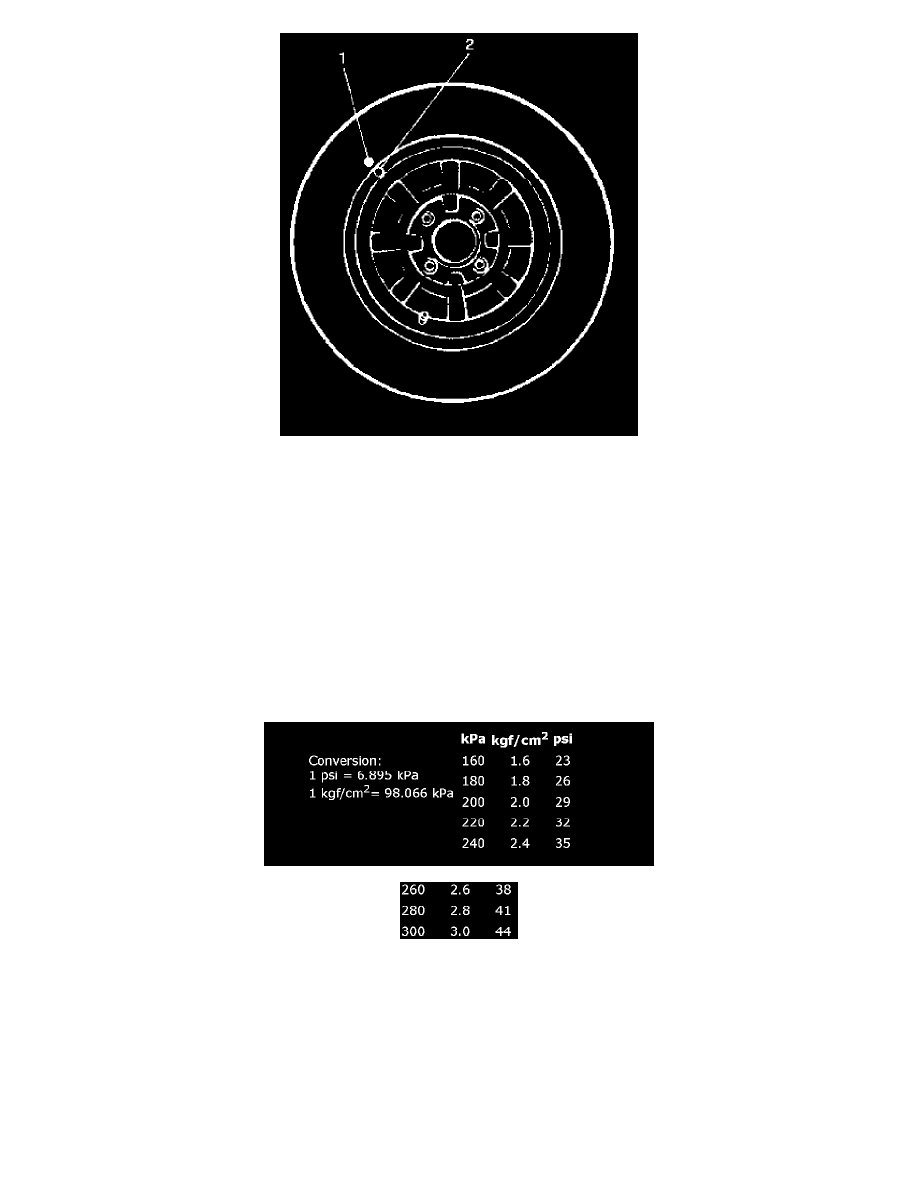Aerio L4-2.3L (2006)

The "high spot" of the tire is originally marked by paint dot (1) on the outboard sidewall. This paint dot will eventually wash off the tire.
The "low spot" of the wheel is originally marked by paint dot (2) on the wheel rim-flange.
Properly assembled, the wheel rims paint dot should be aligned with the tires paint dot as shown in figure.
Whenever a tire is dismounted from its wheel, it should be remounted so that the tire and wheel are matched. If the tire's paint dot cannot be located, a
line should be scribed on the tire and wheel before dismounting to assure that it is remounted in the same position.
Replacement Tires
When replacement is necessary, the original equipment type tire should be used. Refer to the Tire Placard. Replacement tires should be of the same
size, load range and construction as those originally on the vehicle. Use of any other size or type tire may affect ride, handling, speedometer /
odometer calibration, vehicle ground clearance and tire or snow chain clearance to the body and chassis.
It is recommended that new tires be installed in pairs on the same axle. If necessary to replace only one tire, it should be paired with the tire having the
most tread, to equalize braking traction.
WARNING: Do not mix different types of tires on the same vehicle such as radial, bias and bias belted tires except in emergencies, because
handling may be seriously affected and may result in loss of control.
The metric term for tire inflation pressure is the Kilo Pascal (kPa). Tire pressures is usually printed in both kPa and psi on the "Tire Placard". Metric
tire gauges are available from tool suppliers.
The chart, shown the table, converts commonly used inflation pressures from kPa to psi.
